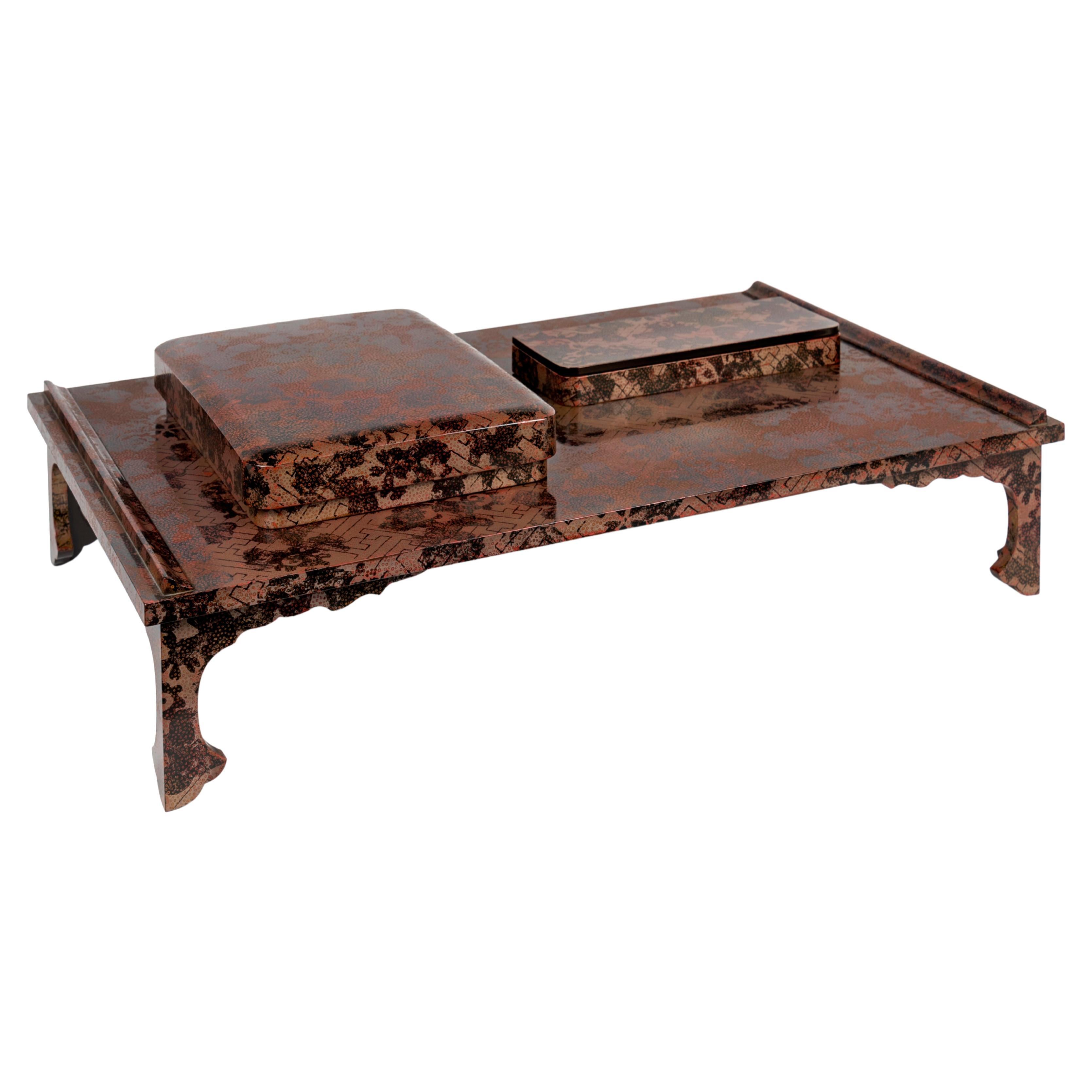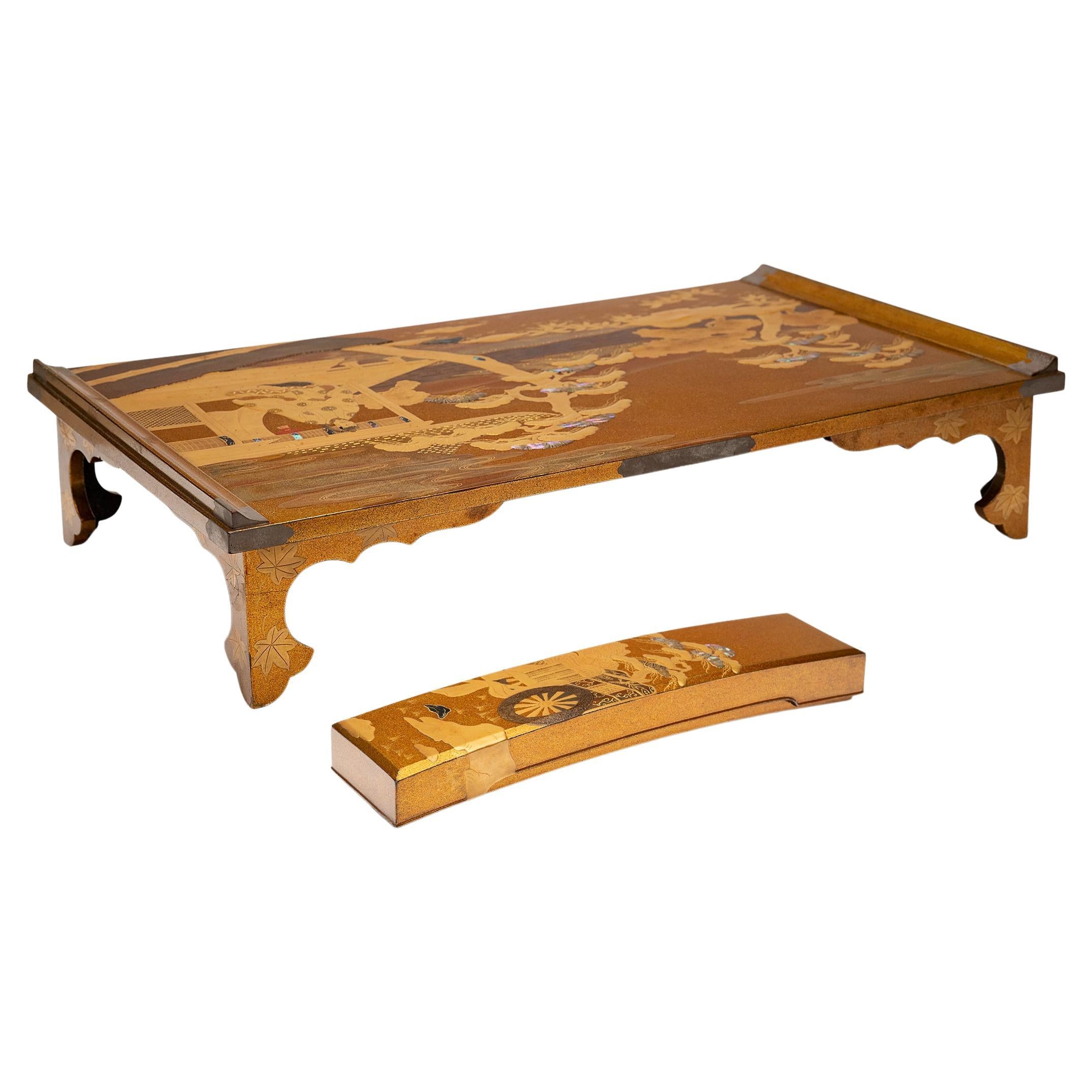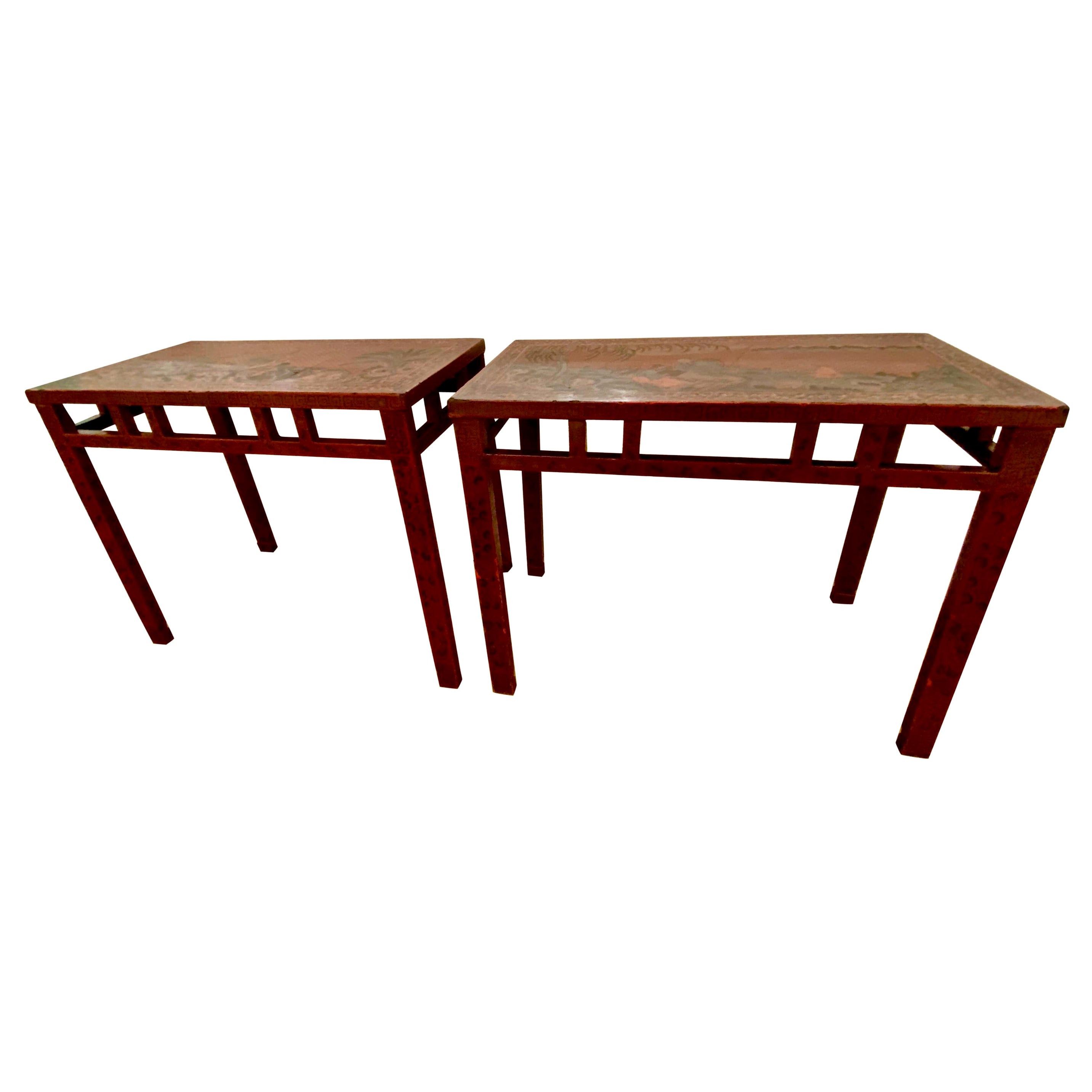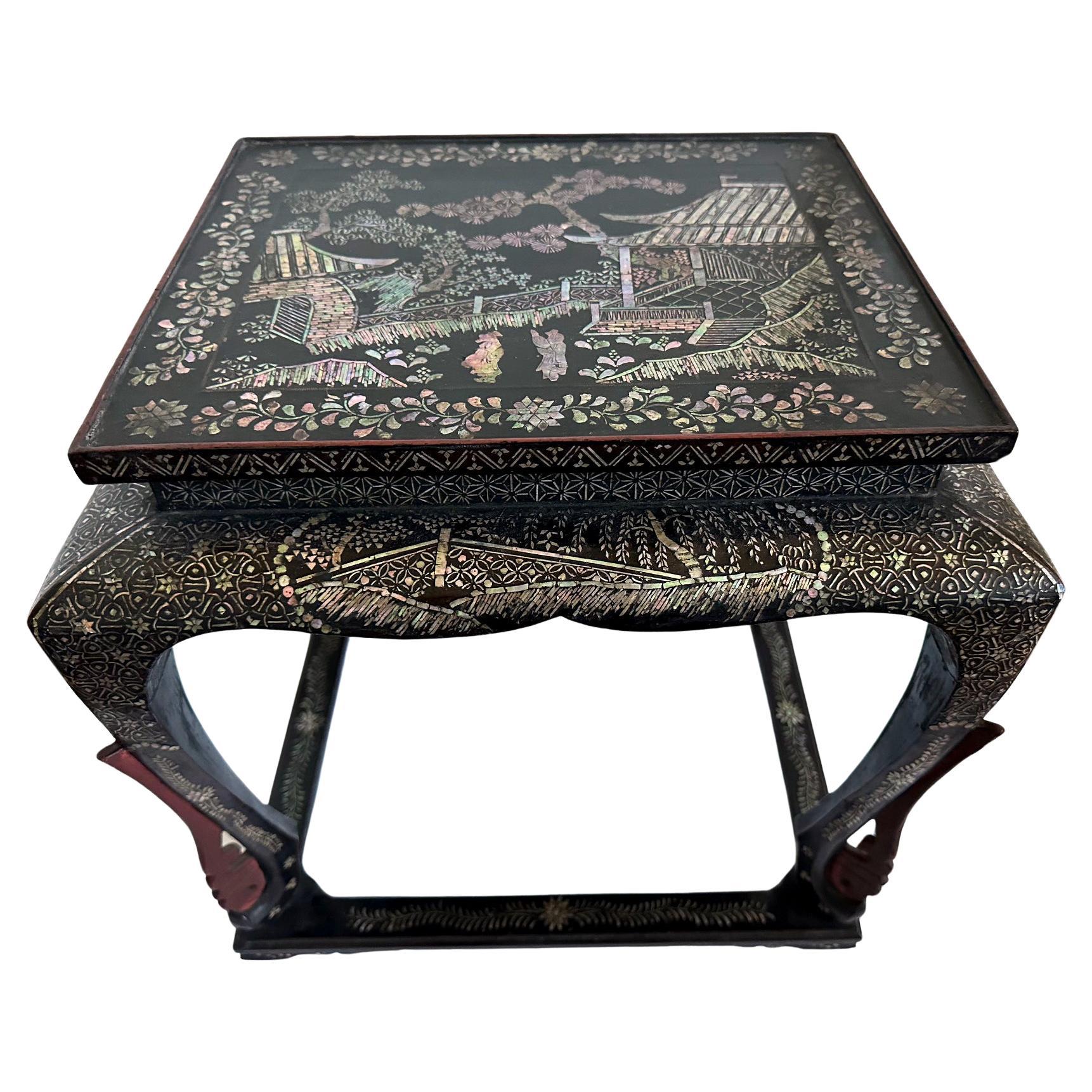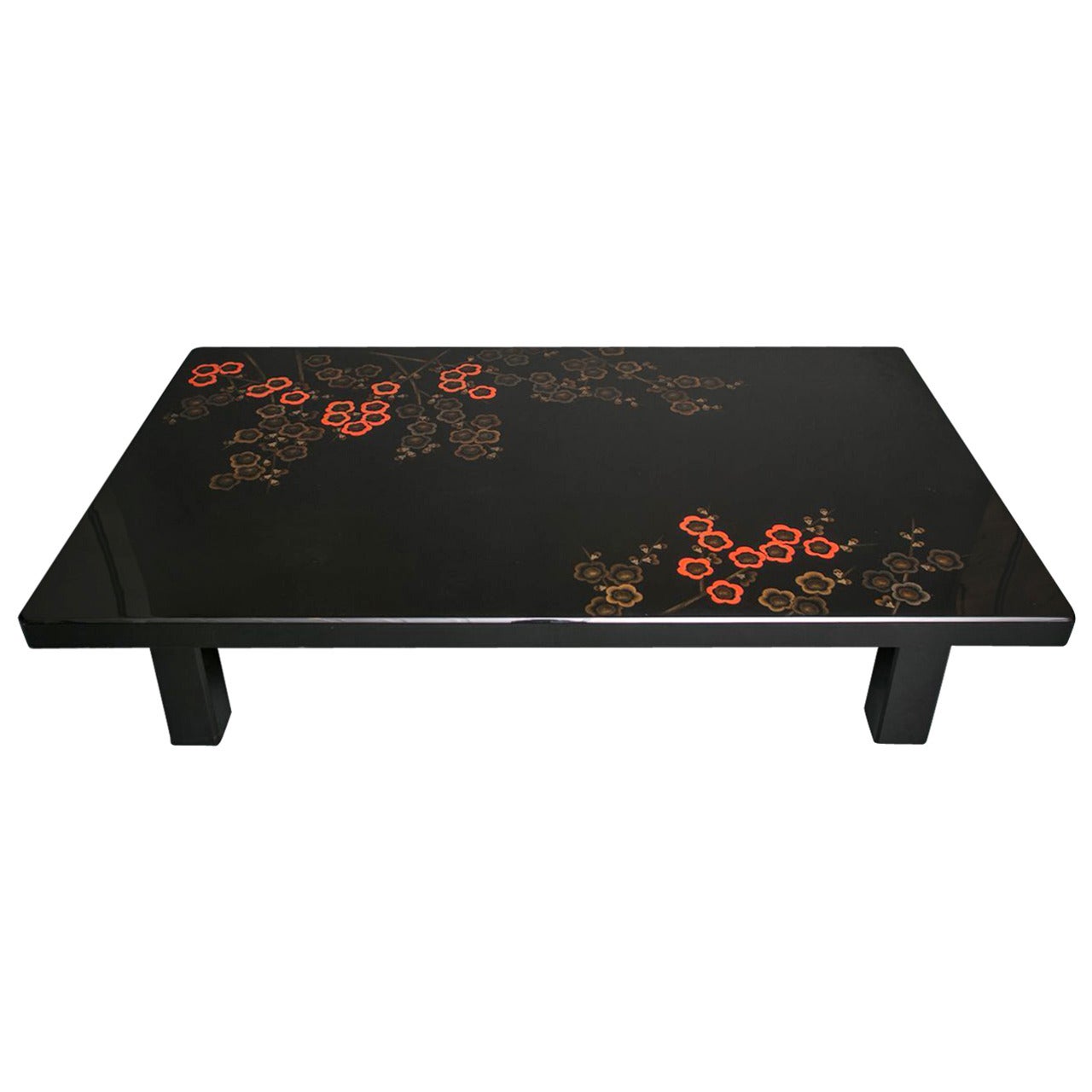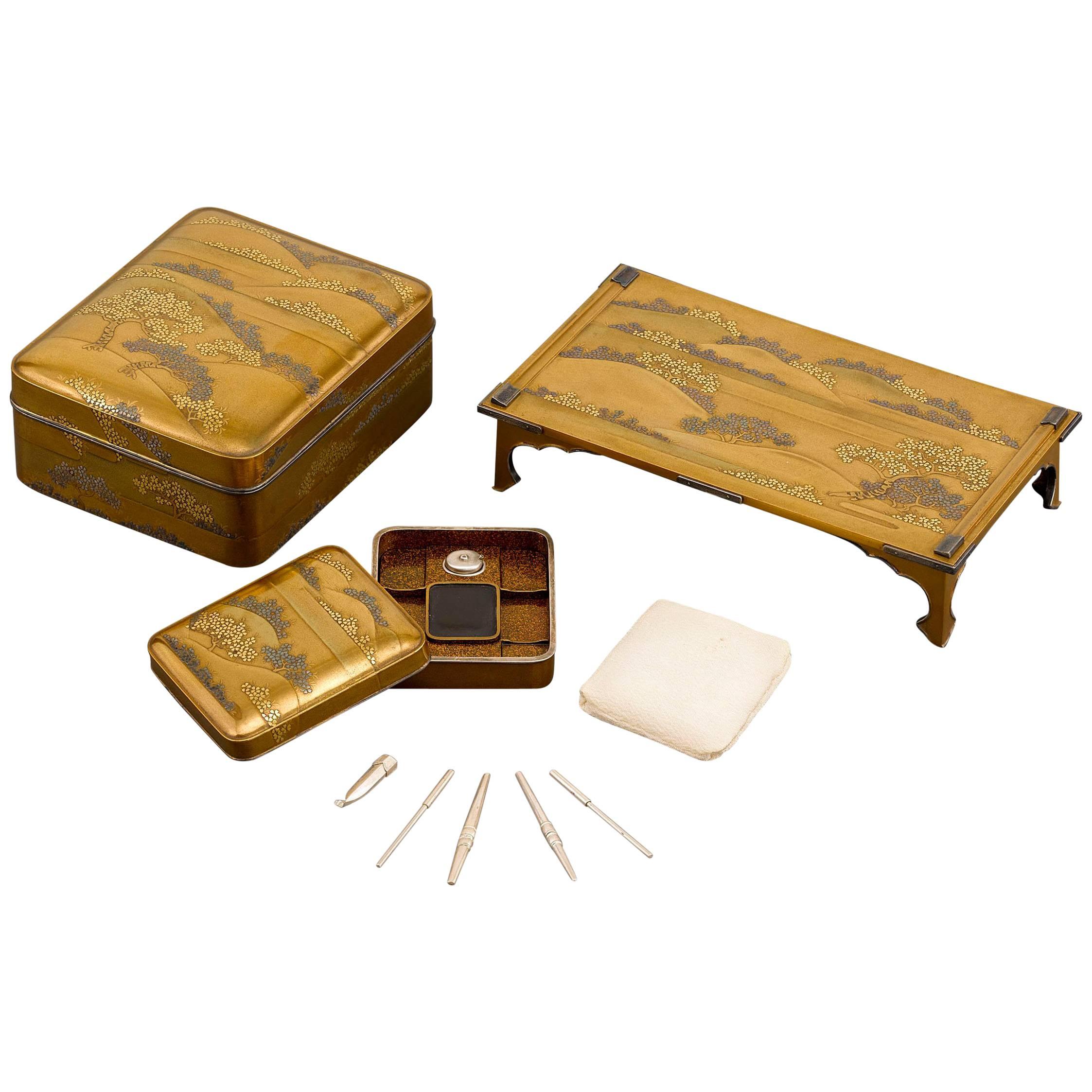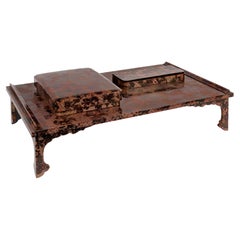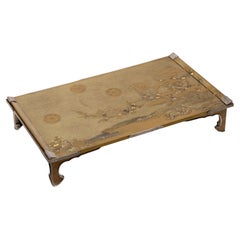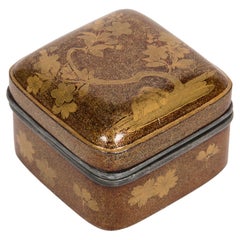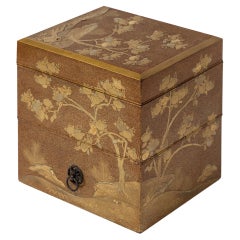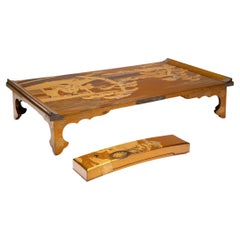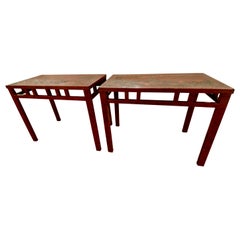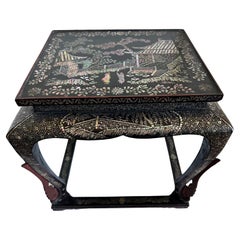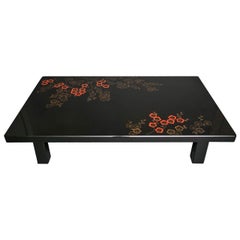Items Similar to Japanese writting set in waqasa lacquer including bundai ryoshibako and fudebako
Want more images or videos?
Request additional images or videos from the seller
1 of 12
Japanese writting set in waqasa lacquer including bundai ryoshibako and fudebako
$11,956.16
£8,851.17
€10,000
CA$16,544.33
A$18,239.75
CHF 9,542.45
MX$223,767.83
NOK 120,120.51
SEK 112,331.67
DKK 76,173.87
About the Item
Set of bundai, ryōshibako and fudebako in wakasa lacquer with an old rose background and black traditional Japanese patterns.
The saya pattern (or sayagata) is composed by Chinese svastikas. This symbol linked to Buddhism, mean intelligence, power and peace. It is a good omen sign.
The kanoko pattern reminds stains on fawn back.
The sakura (cherry blossom) pattern is emblematic of Japan. The blossoming in a short time marks spring beginning and is a symbol of renewal and ephemeral beauty.
There are also traces of calligraphy brush, in reference to the function of the objects.
Bundai is a low table used to put books or scrolls and, later, to write.
Rectangular ryōshibako (letter and document box) with a slightly domed
Fudebako (pencil case) of rectangular format very narrow in its length with two rounded corners, flat cover.
Wakasa lacquerware (wakasa-nuri in Japanese) is a specialty of the Wakasa region in Fukui Prefecture, west of Lake Biwa on the Sea of Japan, produced from the early Edo period (1603-1868). This technique derives from togidashi maki-e and is characterized by the creation of patterns in eggshells, seashells or pine needles.
More specifically, the decoration is obtained by rubbing on superimposed layers of lacquer of different colors. This technique was not known in the West before Japan opened up to international trade.
Japan, Taisho era (1912-1926)
Dimensions :
Bundai : Height 12.4 cm (4.88 inch) - Length 58.2 (22.91 inch) – Width 34.5 cm (13.58 inch)
Ryoshibako : Height 4.6 cm (1.8 inch) - Length 24 cm (9,45 inch) – Width 18.6 cm (7.32 inch)
Fudebako : Height 2.7 cm (1.06 inch) - Length 22.2 cm (8.74) – Width 8.2 cm (3.22 inch)
- Dimensions:Height: 6.7 in (17 cm)Width: 13.59 in (34.5 cm)Depth: 22.92 in (58.2 cm)
- Style:Taisho (Of the Period)
- Materials and Techniques:Lacquer,Lacquered
- Place of Origin:
- Period:
- Date of Manufacture:1912-1926
- Condition:Wear consistent with age and use.
- Seller Location:PARIS, FR
- Reference Number:Seller: 2020-8061stDibs: LU8311242721302
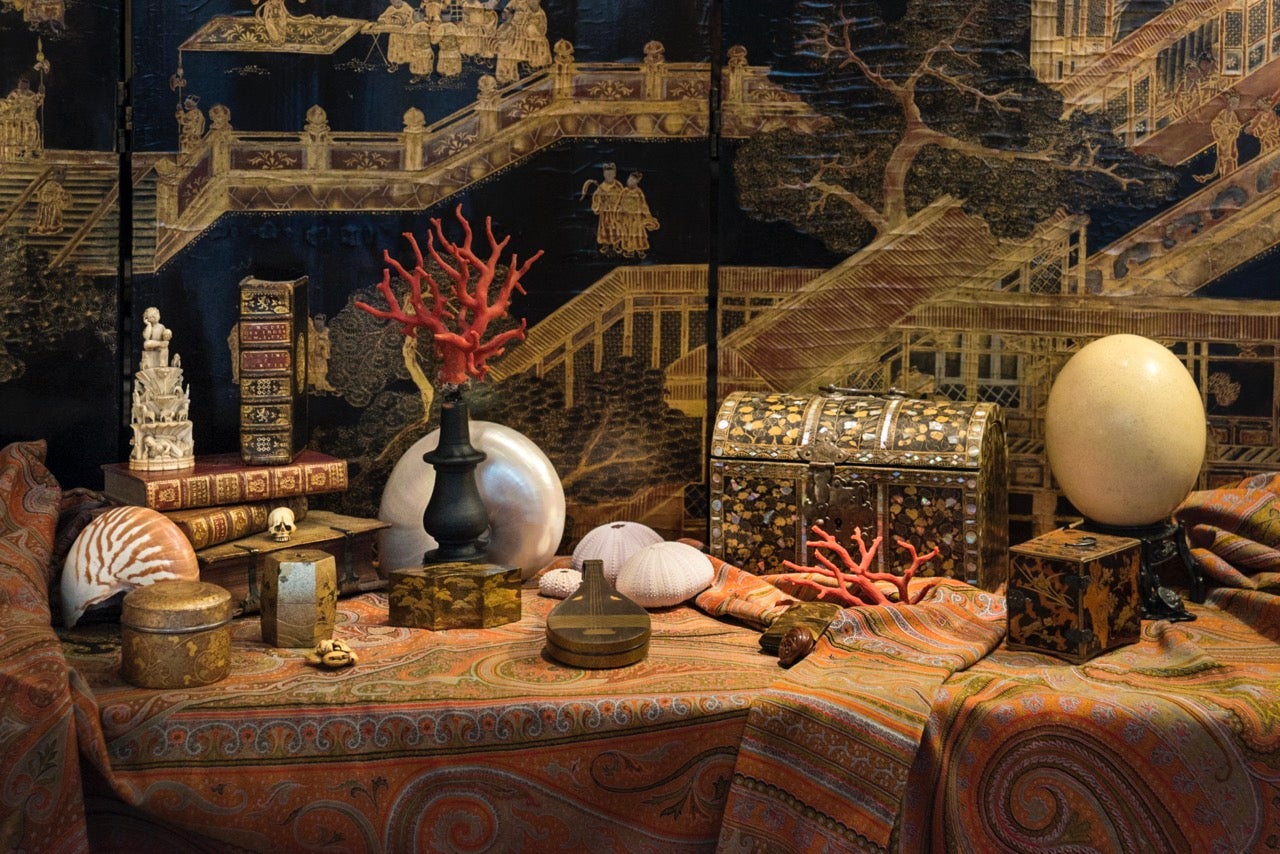
About the Seller
No Reviews Yet
Vetted Professional Seller
Every seller passes strict standards for authenticity and reliability
Established in 2013
1stDibs seller since 2023
- ShippingRetrieving quote...Shipping from: PARIS, France
- Return Policy
Authenticity Guarantee
In the unlikely event there’s an issue with an item’s authenticity, contact us within 1 year for a full refund. DetailsMoney-Back Guarantee
If your item is not as described, is damaged in transit, or does not arrive, contact us within 7 days for a full refund. Details24-Hour Cancellation
You have a 24-hour grace period in which to reconsider your purchase, with no questions asked.Vetted Professional Sellers
Our world-class sellers must adhere to strict standards for service and quality, maintaining the integrity of our listings.Price-Match Guarantee
If you find that a seller listed the same item for a lower price elsewhere, we’ll match it.Trusted Global Delivery
Our best-in-class carrier network provides specialized shipping options worldwide, including custom delivery.More From This Seller
View AllWakasa-Nuri Lacquer Bundai, Ryoshobako, Fubako Set
Located in PARIS, FR
Set of bundai, ryoshibako and fudebako in wakasa lacquer with an old rose background and black traditional Japanese patterns.
The saya pattern (or sayagata) is composed by Chinese svastikas. This symbol linked to Buddhism, mean intelligence, power and peace. It is a good omen sign.
The kanoko pattern reminds stains on fawn back.
The sakura (cherry blossom) pattern is emblematic of Japan. The blossoming in a short time marks spring beginning and is a symbol of renewal and ephemeral beauty.
There are also traces of calligraphy brush, in reference to the function of the objects.
Bundai is a low table used to put books or scrolls and, later, to write.
Rectangular ryoshibako (letter and document box) with a slightly domed
Fudebako (pencil case) of rectangular format very narrow in its length with two rounded corners, flat cover.
Wakasa lacquerware...
Category
Early 20th Century Japanese Lacquer
Materials
Lacquer
Japanese Bundai or writting table in gold lacquer with a decor of lake landscape
Located in PARIS, FR
Rectangular bundai writing table on four legs in gold lacquer with black highlights on a nashi-ji background. The top is decorated with a lake landscape with plum trees, pine trees a...
Category
Antique Early 18th Century Japanese Edo Lacquer
Materials
Gold, Bronze
Japanese lacquered Cherry Tree Kobako
Located in PARIS, FR
Kobako in nashiji lacquer of square shape with a hira maki-e décor of a blossoming
cherry tree. Both of the four sides are adorned with golden lacquer cherry flowers,
represented i...
Category
Antique 19th Century Japanese Lacquer
Materials
Lacquer
Japanese Tebako in Nashiji lacquer adorned with golden Persimon flowers
Located in PARIS, FR
Tebako box with two compartments in golden and nashi-ji lacquer, decorated with golden, red, and kirigane lacquer, golden persimmon tree leaves, among rocks. The compartments are of ...
Category
Antique Early 19th Century Japanese Meiji Lacquer
Materials
Gold
Japanese Lacquered Tebako 'Box'
Located in PARIS, FR
Tebako box with three compartments in golden and nashi-ji lacquer, decorated with golden, red, and kirigane lacquer, golden persimmon tree leaves, among rocks. The compartments are of increasing size from the top. The decoration is in continuity.
Persimmon has been cultivated in southern China for more than 2500 years and is believed to have been introduced to Japan in the 8th century. The veneer is a tree with very hard wood, similar to ebony. According to a legend, one specimen survived the atomic bombing of Nagasaki on August 9, 1945, close to the epicenter. It is therefore in Japan a symbol of strength and longevity. It is also the national fruit of the country. It is eaten as a traditional dish during New Year's Day celebrations.
Tebako literally means "portable box...
Category
Antique 1860s Japanese Lacquer
Materials
Lacquer
Chinese Altar or Console made of exotic wood
Located in PARIS, FR
Chinese altar also used as console or side table. Made of exotic hard wood, probably zitan, with a dark patina. It features voluptuous flared edges and spandrels carved in cloud moti...
Category
Early 20th Century Japanese Qing Furniture
Materials
Hardwood, Zitan
You May Also Like
Japanese Meiji Gilt Lacquer Writing Desk & Poem Box
Located in Chicago, IL
With intricate construction and exquisite decoration, this fine tabletop writing set is a masterpiece of Japanese lacquerware. The matching set includes a writing table (bundai) and poem box (tanzaku bako), both decorated with gilt lacquer in the style of takamaki-e and hiramaki-e urushi lacquer.
Framed by everted ends, the lacquered table top is masterfully worked, depicting a robed man seated on a veranda within an idyllic mountain-and-water landscape. Swirling clouds drift overhead and pine trees bend towards the sky, formed of raised lacquer (takamaki-e) and mother of pearl inlay (raden). Dark lacquer at the corners imitate metal hardware and the sculptural corner legs are decorated with raised motifs of maple leaves.
The writing table includes a matching poem box (tanzaku bako), used for storing paper cards of painted calligraphy and poetry. The lid is similarly decorated in shimmering gilt lacquer with a raised design of a fine carriage beneath a pine tree, draped in cloths and shaded by bamboo blinds...
Category
Early 20th Century Japanese Meiji Lacquer
Materials
Mother-of-Pearl, Wood
Chinese Lacquer Consoles
Located in Pasadena, CA
This is an unusual pair of Late Ching Chinese cinnabar-toned coromandel lacquer small altar or side tables. The tops of the tables feature complementary incised and painted scenes from Chinese every day life. Both tables are in very good condition considering their 100+ years of use. It is unusual to find a pair of coromandel incised lacquer...
Category
Antique Mid-19th Century Chinese Chinese Export Lacquer
Materials
Wood, Lacquer
$3,815 Sale Price / set
30% Off
Antique Japanese Lacquer and Inlay Table from Ryukyu Islands
Located in Atlanta, GA
A small square-form table with lacquer and intricate mother-of-pearl inlay design from Ryukyu Islands kingdom circa 17-18th century. Ryukyuan kingdom was used to be an independent is...
Category
Antique 18th Century Japanese Edo Lacquer
Materials
Mother-of-Pearl, Lacquer
Japanese Wakasa Lacquer Table
Located in Hudson, NY
Japanese Wakasa lacquer table with coral quince design.
Signature not readable.
Category
Vintage 1930s Japanese Furniture
Materials
Lacquer
Japanese Meiji Lacquer Writing Set
Located in New Orleans, LA
This remarkable Japanese portable writing set contains the instruments of sublime artistic expression. Also known as a yatate, this Meiji-period set i...
Category
Antique 19th Century Japanese Meiji Scholar's Objects
Materials
Stone
Chinese Red Lacquer Writing Set with Twin Dragons, c. 1900
Located in Chicago, IL
Designed for traveling poets or scholar-artists, a collapsible writing set allowed a Chinese calligrapher to paint in nature, whether a journey to a far-off vista or an afternoon spe...
Category
Early 20th Century Chinese Qing Furniture
Materials
Wood
More Ways To Browse
Lacquered Chinese Table
Japan Lacquer Table
Japanese Lacquered Table
Japanese Brushes
Japanese China Set
Needle Case
Lacquer Scroll Table
Japanese Black Lacquer Table
Japanese Corner Tables
Lacquered Eggshell
24 In Height Round Table
Calligraphy Brush
Calligraphy Brushes
Japan Low Antique Table
Antique Letter Box
Japanese Document Boxes
Antique Document Box
Japanese Lacquer Low Table
